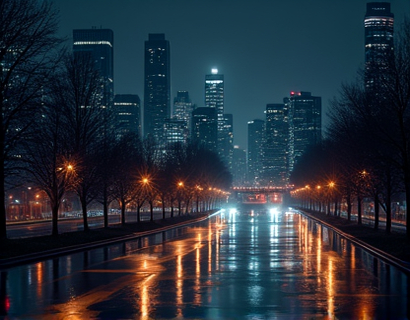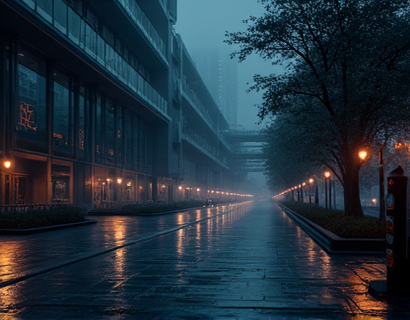Unlocking the Ancient Indus: A Traveler's Guide to Cultural Heritage and Local Wonders
The ancient Indus Valley, a cradle of civilization, beckons modern travelers with its rich tapestry of history, culture, and natural beauty. This comprehensive guide aims to unlock the secrets of this timeless region, offering deep insights into its cultural heritage, historical landmarks, and practical travel tips. Whether you are a history enthusiast or a curious traveler seeking hidden gems and local attractions, this guide will enhance your journey through the Indus Valley.
Historical Background
The Indus Valley Civilization, one of the world's earliest urban cultures, flourished around 2600 BCE in the northwestern regions of South Asia. Spanning modern-day Pakistan and northwestern India, this civilization is renowned for its advanced urban planning, sophisticated water management systems, and intricate craftsmanship. The cities of Harappa and Mohenjo-Daro, both UNESCO World Heritage Sites, stand as testaments to the ingenuity and sophistication of this ancient culture.
The Indus people were skilled in metallurgy, pottery, and textile production. Their writing system, though not yet fully deciphered, suggests a complex society with a well-organized administration. The civilization's decline around 1900 BCE remains a subject of debate among historians, with theories ranging from climate change to invasions by nomadic tribes.
Key Historical Landmarks
Visitors to the Indus Valley cannot miss the iconic sites of Harappa and Mohenjo-Daro. Harappa, discovered in the 1920s, is one of the largest Indus sites and offers a glimpse into the daily life of its ancient inhabitants. The Granary, a massive structure with advanced ventilation and storage systems, highlights the civilization's architectural prowess.
Mohenjo-Daro, meaning "Mound of the Dead," is equally fascinating. The Great Bath, a sophisticated water structure, is believed to have been used for ritual purification. The city's drainage system, with separate channels for sewage and rainwater, showcases the Indus people's advanced engineering skills. The Pillared Hall, with its unique architectural design, remains a mystery, suggesting possible religious or communal uses.
Other notable sites include Dholavira in Gujarat, known for its well-preserved water conservation systems, and Rakhigarhi, one of the largest but least excavated Indus sites. Each of these locations offers a unique perspective on the Indus civilization's way of life and technological advancements.
Cultural Heritage
The Indus Valley Civilization left an indelible mark on the cultural heritage of the region. The people of the Indus were known for their art, which often depicted animals, plants, and abstract symbols. Terracotta figurines, seals, and jewelry found at various sites showcase a high level of craftsmanship and artistic expression.
One of the most intriguing aspects of Indus culture is its religious practices. The presence of numerous bathing structures and the depiction of a seated yogic figure on a seal suggest a form of spirituality that may have influenced later Indian religions. The lack of monumental temples or palaces indicates a society that valued practicality and community over grandeur.
The Indus script, with its 400+ symbols, remains one of the greatest mysteries of the ancient world. Despite extensive research, the script has not been fully deciphered, leaving much to the imagination. However, the consistent use of the script on seals and pottery suggests a standardized system of communication, essential for trade and administration.
Practical Travel Tips
Visiting the Indus Valley requires careful planning to make the most of your journey. Here are some practical tips to ensure a smooth and enriching experience:
- Best Time to Visit: The cooler months from October to March are ideal for exploring the sites, as the weather is pleasant and comfortable for outdoor activities.
- Dress Code: Dress modestly when visiting religious or historical sites. Lightweight, breathable clothing is recommended for hot weather.
- Hydration: Carry plenty of water, especially when visiting outdoor sites. Staying hydrated is crucial in the arid climate of the region.
- Guided Tours: Consider joining guided tours to gain deeper insights into the history and significance of each site. Local guides can provide valuable context and answer questions.
- Photography: While photography is allowed at most sites, always respect the rules and avoid disturbing archaeological excavations or sensitive areas.
- Local Cuisine: Indulge in the local cuisine, which offers a blend of flavors influenced by the region's history. Try traditional dishes like biryani, kebabs, and fresh salads.
Hidden Gems and Local Attractions
Beyond the main archaeological sites, the Indus Valley offers a wealth of hidden gems and local attractions that are worth exploring:
One such gem is the Cholistan Desert, a vast sandy expanse that was once part of the Indus Valley. The desert's unique ecosystem and nomadic tribes provide a stark contrast to the ancient urban centers. Visitors can experience camel rides and traditional nomadic life, offering a glimpse into the region's rural heritage.
The city of Lahore, while not directly part of the Indus Valley, is a must-visit for its rich history and cultural landmarks. The Lahore Fort and the Badshahi Mosque, both Mughal-era structures, showcase the region's continued importance through the ages. The Anarkali Bazaar, one of the oldest and most vibrant markets in South Asia, offers a sensory overload of colors, sounds, and scents.
For nature lovers, the Sutlej-Indus Wetland Park in Pakistan is a hidden treasure. This protected area is home to a variety of bird species and offers opportunities for bird watching and nature photography. The park's tranquil environment provides a peaceful escape from the bustling cities.
In India, the Rann of Kutch, a salt desert in Gujarat, is another unique destination. During the monsoon season, the area transforms into a vast salt marsh, creating a surreal landscape. The Kutch Desert Festival, held annually, celebrates the region's culture through music, dance, and art.
Essential Resources
To make the most of your trip to the Indus Valley, here are some essential resources to consider:
1. Books: "The Archaeology of Ancient India" by J. Mark Kenoyer provides a comprehensive overview of the Indus civilization. "Indus: Lost Cities, Ancient Traditions, New Discoveries" by Jonathan Mark Kenoyer offers insights into recent archaeological findings.
2. Websites: The Archaeological Survey of India (ASI) website provides detailed information on Indus Valley sites and conservation efforts. The Pakistan Archaeology Department's website offers resources on Pakistani Indus sites and cultural heritage.
3. Apps: Download travel apps like Google Maps for navigation and TripAdvisor for reviews of local restaurants and accommodations. Specialized apps for heritage sites can provide augmented reality experiences and historical context.
4. Local Guides: Hiring local guides can enhance your understanding of the sites and provide access to lesser-known areas. Many guides are knowledgeable about the history and culture of the region.
5. Travel Insurance: Always consider travel insurance to cover unexpected events such as medical emergencies or trip cancellations.
Conclusion
The Indus Valley Civilization remains one of the most fascinating chapters in human history. By exploring its ancient cities, cultural artifacts, and natural landscapes, travelers can gain a profound appreciation for this timeless region. This guide aims to equip you with the knowledge and practical tips needed to embark on a memorable journey through the Indus Valley. Whether you are tracing the steps of ancient civilizations or discovering the vibrant local culture, the Indus Valley promises an enriching and unforgettable experience.










































